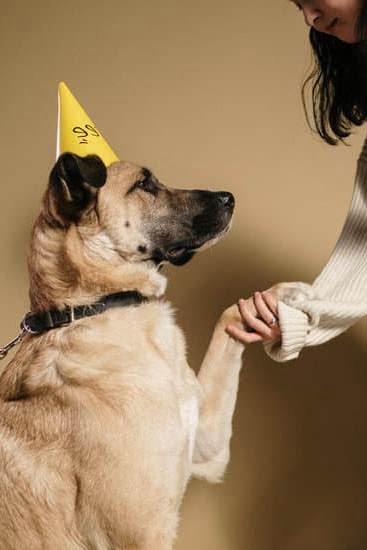Have you ever wondered how to use a clicker when training a dog? Clicker training is a popular and effective method of positive reinforcement training that can help improve your dog’s behavior and obedience. In this article, we will explore the role of a clicker in dog training, how to choose the right clicker for your dog, and provide step-by-step guidance on conditioning your pet to the clicker.
Positive reinforcement training is based on the concept of rewarding desirable behaviors to encourage their repetition. The use of a clicker in this type of training provides a clear and consistent signal to your dog that they have performed the desired behavior. By understanding the principles of positive reinforcement, pet owners can effectively use a clicker as a powerful tool in shaping their dog’s behavior.
In addition to explaining how clicker training works, this article will also cover the process of introducing the clicker to your dog and using it for basic commands such as sit, stay, and come. We will also delve into more advanced techniques like shaping, capturing, and chaining behaviors with the clicker.
If you’re ready to optimize your dog’s training experience through positive reinforcement methods, read on to discover how to effectively utilize a clicker when training your furry companion.
The Role of a Clicker in Dog Training
The use of a clicker in dog training is based on the concept of positive reinforcement, which involves rewarding desired behaviors to encourage them to be repeated. Clicker training works by associating the sound of a clicker with a reward, usually a treat, to communicate to your dog when they have done something correctly. This clear communication helps in marking the precise moment the behavior occurred, making it easier for your dog to understand what they are being rewarded for.
The key to clicker training is timing and consistency. The click must always be followed by a reward, and this needs to be done every time the desired behavior occurs. This helps your dog understand that the click means they did something right and that a reward is coming. Over time, the association between the click, the behavior, and the reward becomes stronger, making it easier for your dog to learn and remember commands.
To start using a clicker when training your dog, you need to first condition your dog to understand what the sound means. This involves pairing the click with treats so that your dog learns that the click equals something positive. Once your dog understands this association, you can then begin using the clicker for basic commands such as sit, stay, come, and more.
When choosing a clicker for your dog, it’s important to consider different types and features available in the market. Some clickers have adjustable volume or multiple sounds which can be useful in different environments. Others may have wrist straps or other design features that make them more user-friendly during training sessions.
| Clicker Types | Features |
|---|---|
| Standard button-click clickers | Inexpensive and easy to use |
| Multifunctional clickers | Adjustable volume or multiple sounds |
| Ergonomic clickers with wrist straps | Easy handling during training sessions |
Choosing the Right Clicker for Your Dog
When it comes to clicker training for your dog, choosing the right clicker is essential to ensure successful training sessions. There are a variety of clickers available on the market, each with different types and features to consider. Understanding the options will help you select the best clicker for your dog’s training needs.
One important consideration when choosing a clicker is the sound it makes. The sound should be distinct and easily heard by your dog, but not too harsh or startling. Some clickers have adjustable volume settings, which can be useful if you are training in different environments or with sensitive dogs.
Another feature to consider is the size and ergonomics of the clicker. It should be comfortable for you to hold and easy to operate one-handed, allowing you to quickly and accurately mark your dog’s desired behavior. Additionally, some clickers come with wrist straps or clips, making it convenient to carry during walks or training sessions.
There are also clickers designed specifically for use in noisy or outdoor environments, ensuring that the sound will be heard even in challenging conditions. These durable and weather-resistant clickers can be particularly useful for training in public places or open spaces where competing sounds may distract your dog.
By carefully considering the different types and features of available clickers, you can choose one that best suits your dog’s needs and enhances your training experience. A well-chosen clicker will effectively communicate with your dog and facilitate successful positive reinforcement training sessions.
Conditioning Your Dog to the Clicker
The clicker is a useful tool when it comes to training your dog. However, it is important to properly introduce the clicker to your dog in order for it to be effective. Conditioning your dog to the clicker involves creating a positive association with the sound of the clicker and rewarding your dog for that association. This step-by-step guide will provide you with the necessary instructions on how to introduce the clicker to your dog.
The first step in conditioning your dog to the clicker is to associate the sound of the clicker with something positive, such as treats or praise. Start by clicking the clicker and immediately giving your dog a treat. Repeat this process several times so that your dog begins to understand that the sound of the clicker means a reward is coming.
Once your dog starts to make the connection between the clicker and receiving a reward, you can start using the clicker during training sessions. Click the clicker at the exact moment your dog performs a desired behavior, such as sitting or staying, and then follow up with a treat or praise. This helps reinforce good behavior and lets your dog know exactly what they did right.
It’s important to keep training sessions short and positive when introducing the clicker to your dog. This will help prevent any confusion or frustration on your dog’s part, ensuring that they have a positive experience with both the clicker and their training sessions.
| Step | Description |
|---|---|
| Step 1 | Associate clicker with something positive (treats/praise) |
| Step 2 | Begin using clicker during training sessions |
| Step3 | Keep training sessions short and positive |
Using the Clicker for Basic Commands
When it comes to using a clicker for basic commands, it is important to understand the role of positive reinforcement in dog training. Positive reinforcement involves rewarding desired behaviors to increase the likelihood of them being repeated. The clicker acts as a precise marker to signal the exact moment your dog has performed the desired behavior, making it an effective tool for teaching basic commands.
Teaching Sit
To teach your dog to sit using a clicker, start by holding a treat in front of your dog’s nose and then slowly raise it slightly above their head. As your dog naturally looks up at the treat, their bottom will naturally lower into a sitting position.
The second you see your dog’s bottom touch the ground, immediately click the clicker and give them the treat as a reward. Repeat this process several times until your dog consistently associates the click with sitting.
Teaching Stay
When using the clicker to teach “stay,” begin by giving the “sit” command to your dog. Once they are in a sitting position, take a step back and use the hand signal for “stay.” If your dog remains in place, click the clicker and reward them with a treat. Gradually increase the distance between you and your dog while practicing the stay command and continue to use the clicker as a marker for when they successfully obey.
Teaching Come
For teaching “come” using a clicker, start by calling your dog’s name followed by the “come” command. When they respond and come towards you, immediately click and give them a high-value reward such as treats or praise. It is important to consistently use the clicker whenever they respond to their name and come towards you to reinforce this behavior.
By following these steps and utilizing consistent positive reinforcement with a clicker, you can effectively teach basic commands such as sit, stay, come, and more to your dog with success. Remember that patience, consistency, and clear communication are key when using a clicker during training sessions.
Advanced Clicker Training Techniques
Shaping involves breaking down a desired behavior into small achievable steps. It requires the dog to gradually learn and perform each step until the final behavior is achieved. This technique is effective in teaching complex behaviors such as spinning in a circle or weaving through obstacles.
Capturing involves marking and reinforcing a natural behavior that the dog already exhibits. For example, if you want to train your dog to bark on command, you would capture the barking behavior by clicking and treating whenever your dog barks naturally. With consistency, your dog will learn that the action of barking leads to a reward.
Chaining behaviors with the clicker involves teaching your dog to perform a sequence of behaviors in a specific order, with each behavior linked to the next. An example of this would be teaching your dog to fetch an item and then drop it in your hand. By using the clicker to mark and reinforce each step of the sequence, your dog can learn complex chains of behaviors.
By incorporating shaping, capturing, and chaining into advanced clicker training techniques, you can effectively communicate more specific commands and behaviors to your dog while strengthening your bond through positive reinforcement training methods.
Troubleshooting Common Clicker Training Problems
Timing Issues
One of the most common problems that dog owners encounter when using a clicker for training is timing. It’s important to click at the exact moment your dog performs the desired behavior, so they can make the association between the action and the reward. If you find that you’re consistently clicking too late or too early, it can confuse your dog and make it harder for them to understand what they’re being rewarded for.
To address timing issues, you can practice clicking without actually training your dog. Try clicking in response to a specific sound or action in your environment to improve your reflexes and accuracy. You can also try starting with behaviors that have a longer duration, such as sitting or staying, to give yourself more time to click at the right moment.
Consistency Challenges
Another common problem in clicker training is inconsistency. Your dog needs to receive consistent feedback in order to understand what is expected of them. Inconsistency can lead to confusion and frustration for both you and your dog. To address this issue, make sure that everyone involved in training your dog is on the same page when it comes to using the clicker and giving rewards. Consistency in timing, communication, and expectation is key to successful clicker training.
Setting up a clear training plan with specific goals and expectations can help maintain consistency throughout the training process. Keep track of progress by noting down which behaviors are being reinforced with the clicker and adjust as necessary based on your observations.
Effectiveness Solutions
If you find that your clicker training isn’t as effective as you’d like it to be, there are a few solutions you can consider. Firstly, check if the rewards being used alongside the clicker are motivating enough for your dog – high value treats or toys often work best.
Alternatively, assess if you’re introducing new commands too quickly or not spending enough time reinforcing each behavior before moving on. Slowing down and making sure each behavior is fully understood before progressing can greatly improve effectiveness.
Regularly evaluating the progress of your dog’s training will allow you to identify any gaps or challenges in their understanding, helping you tailor their training experience for improved effectiveness over time.
Incorporating the Clicker Into Real-Life Scenarios
Using a clicker for behavior modification and addressing problem behaviors in your dog can be an effective tool in your training arsenal. Whether your dog is exhibiting reactive behavior, fear-based aggression, or other unwanted behaviors, the clicker can help shape new, desirable behaviors while also improving the overall bond between you and your pet.
When using a clicker for behavior modification, it’s important to first identify the specific problem behavior you want to address. This could be anything from excessive barking and jumping to destructive chewing or leash reactivity. Once you have identified the behavior, you can then begin implementing a training plan that incorporates the use of the clicker.
One of the key benefits of using a clicker for behavior modification is its ability to provide clear communication with your dog. The sharp, distinct sound of the click helps mark the exact moment your dog exhibits a desired behavior, making it easier for them to understand what they are being rewarded for.
This clear communication can be especially helpful when dealing with complex or deeply ingrained problem behaviors in dogs. By pairing this precise feedback with positive reinforcement in the form of treats or praise, you can effectively reshape your dog’s behavior over time.
In addition, when using a clicker for real-life scenarios such as addressing problem behaviors, consistency is key. It’s important to ensure that everyone who interacts with your dog is on board with using the clicker and is consistent in marking and rewarding appropriate behaviors. With patience, dedication, and proper implementation of clicker training techniques, you can effectively incorporate the clicker into real-life scenarios to address problem behaviors in your dog.
Conclusion
In conclusion, using a clicker when training a dog can be a highly effective and rewarding experience for both you and your pet. By understanding the concept of positive reinforcement training and the role of the clicker in dog training, you can create a strong foundation for teaching your dog new commands and behaviors.
Choosing the right clicker for your dog is crucial in ensuring that the training process goes smoothly. It is important to consider different types and features to find the best fit for your pet. Once you have selected the right clicker, conditioning your dog to respond to the sound is essential. This can be achieved by following a step-by-step guide on how to introduce the clicker to your dog, ensuring that they associate the sound with positive experiences.
Furthermore, as you progress with clicker training, you can explore advanced techniques such as shaping, capturing, and chaining behaviors. Troubleshooting common clicker training problems and incorporating the clicker into real-life scenarios will also help optimize your dog’s training experience.
In doing so, you will not only enhance their obedience and responsiveness but also strengthen your bond with them. With patience, consistency, and knowledge of how to use a clicker when training a dog effectively, you can set your pet up for success in their learning journey.
Frequently Asked Questions
Is a Clicker Good for Dog Training?
A clicker can be a valuable tool for dog training as it provides a clear and consistent sound to mark the desired behavior. It helps in reinforcing positive behaviors and can be especially effective in shaping new behaviors.
How Do I Use a Dog Training Clicker?
To use a dog training clicker, you first need to associate the sound of the clicker with rewards. Then, you would click the device at the exact moment your dog exhibits the desired behavior, followed by giving them a treat or praise.
How Do You Clicker Train a Dog for Beginners?
When clicker training a dog for beginners, it’s important to start with simple behaviors and consistently mark and reward them. Begin by teaching your dog to associate the click with a reward, and gradually introduce new behaviors while maintaining consistency in your clicks and rewards.

Welcome to the blog! I am a professional dog trainer and have been working with dogs for many years. In this blog, I will be discussing various topics related to dog training, including tips, tricks, and advice. I hope you find this information helpful and informative. Thanks for reading!





